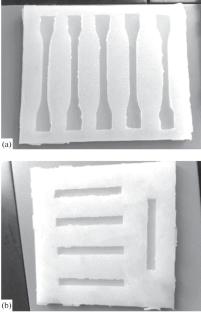环氧树脂与聚酯树脂浸渍玻璃毡复合材料力学性能的比较
IF 0.3
Q4 MATERIALS SCIENCE, MULTIDISCIPLINARY
引用次数: 0
摘要
本文介绍了试样的抗拉强度和冲击韧性与填充层数和浸渍树脂类型的关系的研究结果。结果表明,环氧树脂浸渍试样的抗拉强度比聚酯树脂浸渍试样平均高出14%,冲击韧性平均高出11%。本文章由计算机程序翻译,如有差异,请以英文原文为准。

Comparison of Mechanical Properties of Composites on the Basis of Glass Mat Impregnated with Epoxy and Polyester Resins
This paper presents the results of research on the dependence of tensile strength and impact toughness of samples on the number of filler layers and the type of impregnating resin. It is shown that samples impregnated with epoxy resin exceed samples with polyester resin by an average of 14% in tensile strength and by 11% in impact toughness.
求助全文
通过发布文献求助,成功后即可免费获取论文全文。
去求助
来源期刊

Inorganic Materials: Applied Research
Engineering-Engineering (all)
CiteScore
0.90
自引率
0.00%
发文量
199
期刊介绍:
Inorganic Materials: Applied Research contains translations of research articles devoted to applied aspects of inorganic materials. Best articles are selected from four Russian periodicals: Materialovedenie, Perspektivnye Materialy, Fizika i Khimiya Obrabotki Materialov, and Voprosy Materialovedeniya and translated into English. The journal reports recent achievements in materials science: physical and chemical bases of materials science; effects of synergism in composite materials; computer simulations; creation of new materials (including carbon-based materials and ceramics, semiconductors, superconductors, composite materials, polymers, materials for nuclear engineering, materials for aircraft and space engineering, materials for quantum electronics, materials for electronics and optoelectronics, materials for nuclear and thermonuclear power engineering, radiation-hardened materials, materials for use in medicine, etc.); analytical techniques; structure–property relationships; nanostructures and nanotechnologies; advanced technologies; use of hydrogen in structural materials; and economic and environmental issues. The journal also considers engineering issues of materials processing with plasma, high-gradient crystallization, laser technology, and ultrasonic technology. Currently the journal does not accept direct submissions, but submissions to one of the source journals is possible.
 求助内容:
求助内容: 应助结果提醒方式:
应助结果提醒方式:


